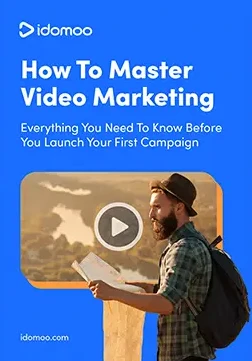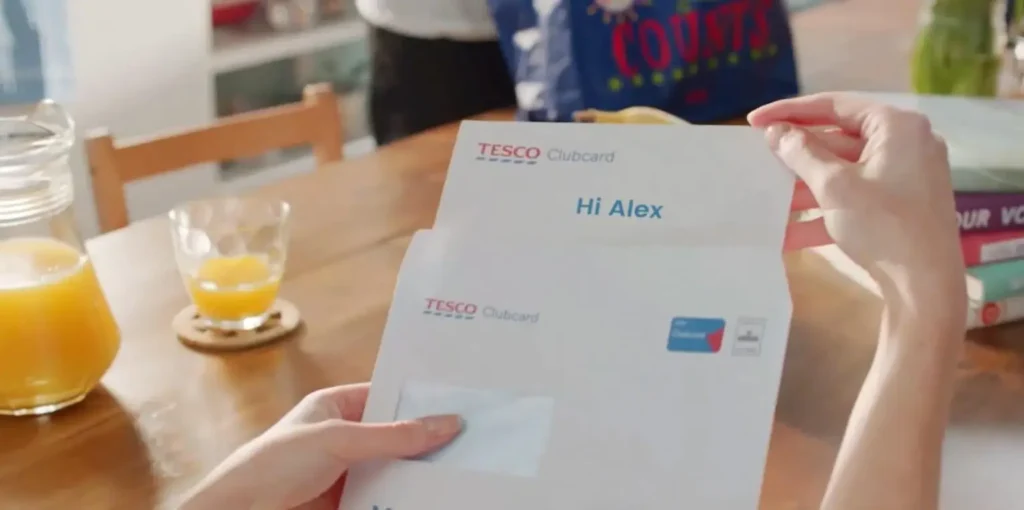Marketers have been turning to video for years to overcome the challenges of text communications. Video is more memorable, shareable and engaging — and people love it. It accounts for the vast majority (over 80%) of all consumer internet traffic.
But video technology is changing. Previously, brands used video mainly to communicate big messages. Think of splashy branding campaigns or ad spots to raise awareness. Because video was expensive and often hard to produce and update, it rarely found its way into day-to-day customer communications.
Not so anymore. Video doesn’t have to be generic for a broad audience. It can be timely, interactive and deeply relevant for current and prospective customers.
One of video’s greatest strengths is its ability to convey tone, body language and emotion, making customers feel truly connected to your brand. This makes it a powerful tool for building meaningful relationships and delivering exceptional customer service.
By leveraging the video format, brands can not only improve sales performance but also boost retention, which is increasingly critical for your bottom line. Indeed, many marketers have learned not to ignore the importance of customer retention, understanding the positive ROI that comes from prioritizing customer loyalty.
Here are 4 ways video is poised to revolutionize the world of customer comms.
Video Is Interactive
If you want to drive conversions, your content needs to be actionable. Video is no different.
In the past, this meant text might display on the screen or the voiceover might state the call to action. Now, videos can be interactive and with the web so consumers don’t need to search for the CTA. They can click to check out, set up a meeting and more, all right from the video.
Check out how it all works by clicking through the video below. Don’t forget to click on the lightning bolt icon in the player to customize it with your details.
As you can see, creative marketers aren’t limited to a button. Any element on the screen can be actionable, allowing viewers to select items to browse deeper. Combine this with customer first-party customer data, which lets you share only the most relevant offers, and upselling and cross-selling potential skyrockets.
But as Interactive Video takes off, this won’t be just for sales. Already, brands are adopting it for customer service. You can let customers self-serve for common issues, using video to answer frequently asked questions or provide a quick tutorial for common issues.
This is a powerful way to enhance the customer experience, offering great customer service in a video that’s immediately accessible and user-friendly. No more angry customers waiting on hold for your customer service team. They can refer to an interactive FAQ video, select their concern and get a personalized answer for their specific situation.
For instance, this video covering the end of mortgage forbearance doesn’t force viewers to sit through every option but puts the power in their hands by letting them pick what they want to learn about. This makes the experience much more relevant, enjoyable and timely. Try interacting with it yourself below.
This kind of customer engagement and proactivity slashes calls to call centers and provides customer support when and where people want it — 24/7, on-demand (and often on their phones). This is all part of the ongoing evolution of digital communications: putting customers in control so they get what they want when they want it.
Auto-Updates for Evergreen Videos
If you talk to marketers about the challenges of creating video, money and time are the top two concerns. You get an agency or a team in-house to work long and hard on the perfect production and then, in a matter of months, it seems like it’s already out of date.
Videos that can’t adapt don’t work for customer communications. They might work for advertising where the message doesn’t necessarily have to change. But when you’re talking to customers, the message is never one-size-fits-all. It must be relevant at the 1:1 level and up-to-date with the right information to ensure good communication.
Post on
Personalized Video, which has grown in popularity over the past several years, is part of this. Brands can automatically generate unique videos for every customer at scale — even millions of customers — guaranteeing that content is right for that individual.
New video tech now also allows video to adapt in real-time based on the viewer’s context and changes in the world around them. In other words, the same customer can see a different video, depending on where they are, when they watch and what they’re watching it on.
What does this look like in practice? Check out how this video taps into live data from Netflix to give you the most up-to-date information about the top films on the platform.
Now imagine an interactive shoppable video that’s linked to inventory, so products can include price, availability and even estimated shipping to the customer’s city (because the video can detect your location).
Even better, the same video automatically updates with new data. If something is out of stock, another product is displayed. One video can have infinite variations, a game changer for video marketing ROI since it limits your investment to one data-rich video while enabling unlimited returns. Video is now truly evergreen.
Let Users Customize Videos for Viral Distribution
Want your customers to share branded content? Let them put their own twist on it.
Video personalization puts your customer at the center of the story. We’ve seen it directly influence behavior, like increasing retirement savings by a whopping 78% when customers received a video from their future selves.
User customization, however, takes personalization a step further by letting the customer choose what they want to see in their video. Directly from the video, users can make changes, depending on what the brand lets them customize. It can be changing text, uploading media or choosing from drop-down options.
For retail, this means customers can design the product they want, generate a custom video instantly and share it with their friends. Similarly, hospitality customers could be invited to create a showreel of their recent trip and share it with their friends.
Gaming videos are another potential use case. Personalized year-in-review campaigns, like the one below, are all the rage in the gaming sphere. With user customization, brands can let players handpick their top wins and — you guessed it — share it with the world on social media.
This reinforces customer loyalty by giving them a sense of ownership in the experience. It also turns any customer into a brand ambassador. That kind of social proof is powerful. In fact, word of mouth has been found to be the primary factor behind 20-50% of all purchasing decisions.
Video customization isn’t all fun and games. It’s also a way for customers to input what they need and get answers in real time, further improving customer satisfaction levels. For example, prospective customers can input what they need, such as insurance coverage requirements, and get a bespoke quote, delivered instantly in a new video.
It’s like an online app in video form, with customers getting immediate, tailored responses. Click on the lightning bolt in the mortgage calculator below to see this tech in action.
AI Video Revolutionizes the Production Process
It’s hard to talk about the future of video technology without mentioning AI. Artificial intelligence has quickly become a game-changer in the world of video production, making the process faster, more affordable and ultimately more scalable. Traditionally, producing high-quality videos took lots of time and resources, making it out of reach for many small businesses. But with AI video, that’s no longer the case.

AI can now handle the entire video production process from start to finish. From generating the script to creating voiceovers, animations, footage and even interactive CTAs, our Enterprise AI Video solution can produce full videos in record time — all while keeping them fully editable.
Better yet, because we use retrieval-augmented generation, our creator is trained on your content rather than external data sources. The result? High-quality videos that are accurate, on-brand and optimized for effective communication with diverse audiences, from your loyal customer base to internal employees.
The Future of Customer Comms? Visual, Interactive and Personal
As the world gets increasingly digital, the need for a human touch isn’t going away. When it comes to customer communications, video is the gold standard because it allows for a visual, immersive and personalized experience, meeting customer needs in ways that other forms can’t. And with new innovations becoming standard, video will be more relevant to your marketing strategy than ever before.
Going forward, Next Generation Video — video that goes beyond traditional boundaries by being interactive, personalized and data-driven — will redefine customer interactions. Video-driven communications will not just shorten the path to conversion. They will underpin retention and brand loyalty, turning customers into creators and fostering deeper relationships between brands and buyers.
Ready to get on board? Our Next Generation Video Platform is purpose-built to help businesses like yours. Reach out today for a free demonstration from one of our experts.






